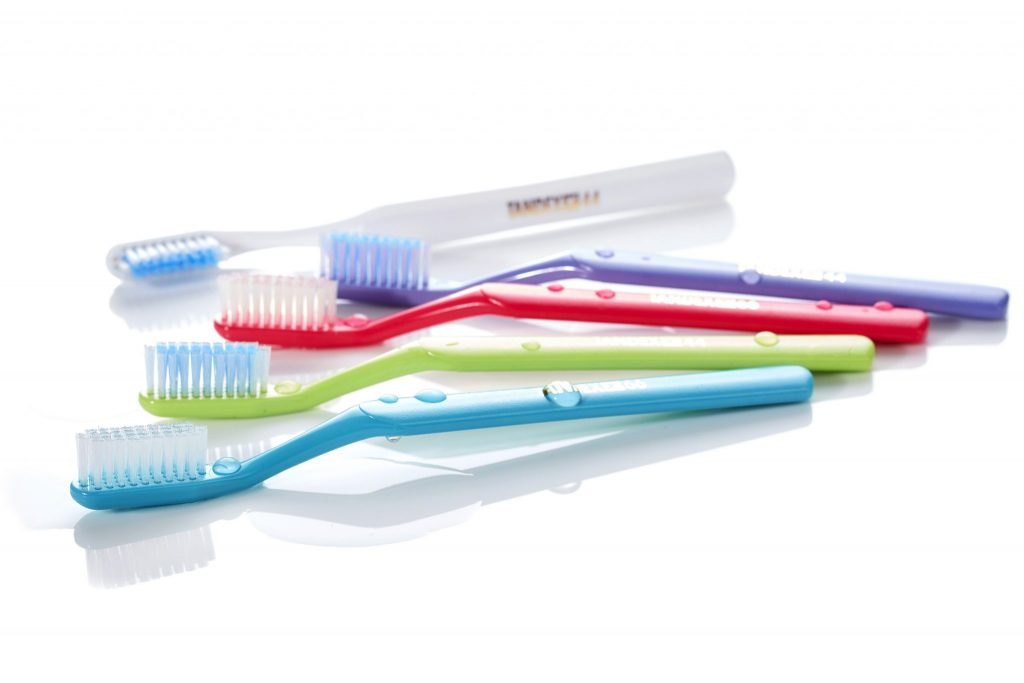Just a toothbrush? Encourage your patients to take a closer look
Featured Products Promotional FeaturesPosted by: Dental Design 5th August 2021

Toothbrushing is the foundation of oral hygiene. Even if they are doing nothing else, we reasonably assume that all our patients are cleaning their teeth, preferably twice a day, with a toothbrush.
The humble toothbrush is a powerful tool for reducing the incidence of preventive dental disease. But like any tool, it must be used properly. As part of your oral health consultations, ask patients to show you their brushing technique, so you can offer instruction on what changes they need to make. This “show and tell” approach is effective at improving engagement and their understanding of why how they brush and with what is so important – they’ll experience what a really clean mouth should feel like, too.
Technique, supported by the right tool
A 2018 study looked at weaknesses in brushing performance for two cohorts of young adults, who were asked to brush their teeth, to the best of their ability, in front of a camera, so the videos could be analysed.[i] What was encouraging was that both groups spent a lot of time brushing (over three minutes); less so was that, for the majority of participants, brushing wasn’t “even”, or efficient. Scrubbing vigorously rather than gentle, controlled movements was common, also the widespread neglect of lateral and proximal surfaces. In later adulthood, these surfaces are where caries are more likely to manifest, these areas must also be cleaned thoroughly to reduce the risk of periodontal conditions.[ii] Over-zealous brushing overtime can lead to dental abrasion also increased recession and sensitivity.
The good news is that significantly optimising toothbrushing technique is achievable, with just a few changes. Technique and tools are intrinsically linked; the right tool will encourage correct grip and support the gentle, efficient application of the brush head around the mouth to clean debris away. Their toothbrush might be one of those items your patients barely give a second thought to – is it time to look more closely at it?
Think again
Even ancient civilisations used instruments to clean their teeth, easing out trapped food with a stick or twig with a frayed end. Bristle brushes were first seen in China in the 1400s, with coarse hog’s hair attached to a bamboo or bone handle. In Europe, the French were the first to advocate and promote the use of toothbrushes, although the first mass-produced brush was invented by an Englishman called William Addis in the 1780s. After World War II, American soldiers bought home the practise of daily oral hygiene, using a toothbrush with nylon bristles, which soon spread across the US. Bristles, or filaments, are mostly still nylon, which has the advantage of being strong and flexible.
Now, there are plenty types of manual toothbrush available, which has made for a crowded marketplace and likely impacted on a consumer’s ability to differentiate between them. Oral health practitioners can direct choice, though, by recommending the best brush for each patient during consultations. Correct toothbrushing should be complemented with interdental cleaning, for maximum impact. Interdental brushes are easy to use, often far easier than string floss, and patients should be shown how they also come in a range of sizes, just like regular toothbrushes, to fit comfortably into different spaces.
 Mindful of sustainability
Mindful of sustainability
Toothbrushes must never be shared, also regularly changed and therefore disposed of. For those who want to avoid plastic and would prefer to use a toothbrush made from biodegradable materials as far as possible, there are high-quality natural alternatives. Are we seeing a circling back to the kinds of materials that the first toothbrushes were made from? Well, aside from a hard pass on boar’s hair and bones, unlike the ancient practitioners of oral hygiene, sustainability is very important to environmentally conscious patients. If a toothbrush has a wooden handle, for example, it should be Forest Stewardship Council (FSC) certified, which indicates that the material has come from a well-managed forest and/or recycled source.[iii] Certain companies are now committed to using these kinds of sustainable materials, also sustainable energy sources in their manufacturing processes, to reduce their carbon footprint. TANDEX, the Danish-based producer of premium oral-hygiene aids, is about to launch the WOODI interdental brush range, a high-quality, functional product with a handle made from FSC-certified birchwood, manufactured in a factory that relies on solar power.
Toothbrushing is part of everyone’s routine. But it must be correct, and it must be done using the best tools. Support your patients in better brushing, and encourage them to think again about their toothbrush, how they choose as well as use it. Correct toothbrushing technique is an essential preventive behaviour, as is using a quality toothbrush. The latest brushes will even protect the environment as well as oral health. For an item that has now been around for centuries, this is a very modern upgrade.
For more information on Tandex’s range of products,
visit https://tandex.dk/ or visit the Facebook page
Author Kimberley Lloyd- Rees on behalf of Tandex
Kimberley graduated from the University of Sheffield in 2010, where she now works as a clinical tutor in Dental Hygiene and Therapy as well as working in practice. She has spent her career working across a variety of specialist private and mixed dental practices, for the MOD and volunteering her time to a dental charity in Nepal.
[i] Deinzer, R., Ebel, S., Blättermann, H. et al. Toothbrushing: to the best of one’s abilities is possibly not good enough. BMC Oral Health 18, 167 (2018).https://doi.org/10.1186/s12903-018-0633-0
[ii] Deinzer, R., Ebel, S., Blättermann, H. et al.
[iii] Forest Stewardship Council https://fsc.org/en
No Comments
No comments yet.
Sorry, the comment form is closed at this time.



